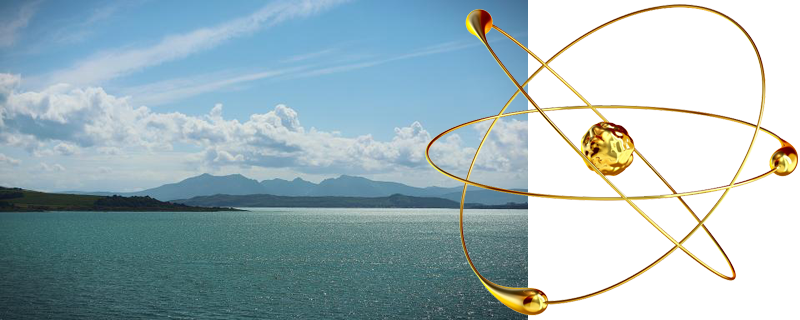Scottish Government Opposes Fusion Energy Station
THE UK Government is considering a Scottish site for a new nuclear fusion energy station – despite the Scottish Government’s opposition.
Conservative Energy Secretary Kwasi Kwarteng will choose one of five potential locations to build the prototype fusion power plant, including a site at Ardeer, near Stevenston, on the Ayrshire coast.
The other sites in contention are all in England. These are Goole in Yorkshire, Moorside in Cumbria, Ratcliffe-on-Soar in Nottinghamshire, and Severn Edge in Gloucestershire.
Technical inspectors will make a final visit to Ardeer next week before making a site recommendation to the UK Government’s Department for Business Energy and Industrial Strategy in the spring.
The considerations are part of the UK’s Atomic Energy Authority’s (UKAEA) plan to develop low carbon forms of power.
Known as the Spherical Tokamak for Energy Production (Step), the project aims to prove that fusion technology can produce energy for the electricity grid and pave the way for similar, commercial power stations.
Tory energy secretary Kwasi Kwarteng will make the final decision of where the build the prototype nuclear station
The nuclear technology works by fusing two types of hydrogen atoms together to produce heat that can then be converted into electricity, with the main waste product being helium.
A total of £222 million in preparatory funding has been allocated to select a site and develop a concept design, with a “considerably higher quantum of money” then required to build the working power plan by 2050, according to Leon Flexman of the UKAEA.
The Scottish Government has said that its position on traditional nuclear energy has not changed and that it does not support the building of any new nuclear power stations in Scotland.
A spokesperson said: “We note this stage in the UKAEA’s Step competition process.
“Delivering a net-zero economy by 2045 will require significant growth in renewable and clean electricity production, and work is underway to refresh our Energy Strategy to reflect this transformation.”
The Government said that nuclear energy would not play a part in that strategy, which is due to be published later in 2022.
While the Scottish Greens and anti-nuclear campaigners have previously spoken out against the nuclear project, the SNP MP for North Ayrshire and Arran, Patricia Gibson, has expressed support.
Gibson said in October: “I am delighted that Ardeer peninsula, in my North Ayrshire and Arran constituency has, rightly, made the shortlist for development of this futuristic green, clean fusion technology.”
Explaining the Step project, the UKAEA’s Flexman said the project was “completely the opposite” to normal nuclear fission.
However, he said the technology needed refining, saying: “What we’re looking at doing is changing from effectively a very big and proven laboratory experiment that only works for a short space of time and, frankly, requires much more electricity to make it work than you actually get out of it.
“So the next step is to turn that into a fusion machine that you can connect to the grid and demonstrate that you can get more power out than you put in.”
Flexman added: “It’s a different kettle of fish entirely to nuclear fission in terms of levels of radioactivity – you’re talking about radioactive materials that will have half lives of 12 years or around that sort of magnitude, rather than the thousands of years that you get with nuclear fission.”
The proposed site would need to be at least 100 hectares (247 acres), but North Ayrshire Council – which is controlled by a Labour minority administration – says there is a possible 600 hectares (1482 acres) available on the Ardeer peninsula.
Ardeer borders on the Bogside Flats site of special scientific interest (SSSI), a part of which is also an RSPB reserve.
Caitriona McAuley, the council’s head of economic growth, said the current estimates were that the nuclear project would create 3500 jobs during the construction period and then 1000 when the site was operational.
She said the chance for North Ayrshire to be the “heart and foundation” of the project was “obviously really exciting”.
A spokesperson for the UK’s Department for Business, Energy and Industrial Strategy – which is headed up by Kwarteng – said they “noted and regretted” the Scottish Government’s position.
They added: “It would be wrong to deny the Scottish people and scientific community the opportunity to play a role in developing fusion, the ultimate clean power. That is why a site in Scotland has been shortlisted to host the UK’s prototype nuclear fusion energy plant.”
Source: The National









Leave a Reply
Want to join the discussion?Feel free to contribute!